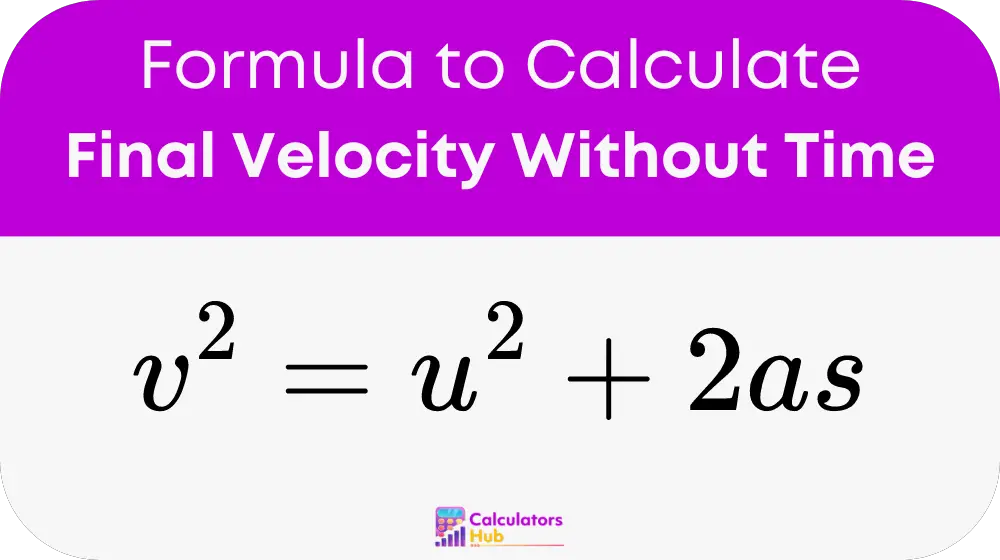Final velocity is a fundamental concept in kinematics, describing the speed of an object at the end of its motion. Calculating this without the time variable is particularly useful in scenarios where time is difficult to measure or irrelevant. This calculator provides a way to compute final velocity using initial velocity, acceleration, and displacement.
Formula of Final Velocity Calculator Without Time
The key formula for calculating final velocity without time is:

Here’s what each variable represents:
- v: Final velocity
- u: Initial velocity
- a: Acceleration
- s: Displacement
To find the final velocity (v), rearrange the formula:
v = sqrt(u^2 + 2as)
teps to Calculate Final Velocity:
- Identify the initial velocity (u): The speed at which the object starts.
- Determine the acceleration (a): The rate of change of velocity.
- Measure the displacement (s): The total distance the object travels.
- Plug the values into the formula to calculate final velocity.
Table of General Terms and Calculations
| Term | Description | Typical Values or Conversion Factors |
|---|---|---|
| Initial Velocity (u) | The velocity of the object at the start of its motion | Measured in meters per second (m/s) |
| Final Velocity (v) | The velocity of the object at the end of its motion | Calculated in meters per second (m/s) |
| Acceleration (a) | Rate of change of velocity | Measured in meters per second squared (m/s²) |
| Displacement (s) | Total distance covered by the object | Measured in meters (m) |
| Gravity (g) | Acceleration due to gravity | Approx. 9.81 m/s² on Earth |
| Kinetic Energy (KE) | Energy due to motion | Calculated as 1/2𝑚𝑣2 (in joules) |
| Potential Energy (PE) | Energy due to position | Calculated as 𝑚𝑔ℎ (in joules) |
Example of Final Velocity Calculator Without Time
Consider a car accelerating from rest with an acceleration of 3 m/s² over a displacement of 50 meters. Using the formula:
v = sqrt(0^2 + 2 * 3 * 50)
v = sqrt(300) = 17.32 m/s
This example demonstrates how the formula applies in real-world scenarios, allowing for the calculation of final velocity without the need for time data.
Most Common FAQs
A1: Yes, this formula is applicable for any uniformly accelerated motion without the need for time measurement.
A2: The formula still applies. If any variable is zero, it simplifies the calculation, as seen in the example.
A3: It is very accurate provided the values used are precise and the motion is uniformly accelerated.